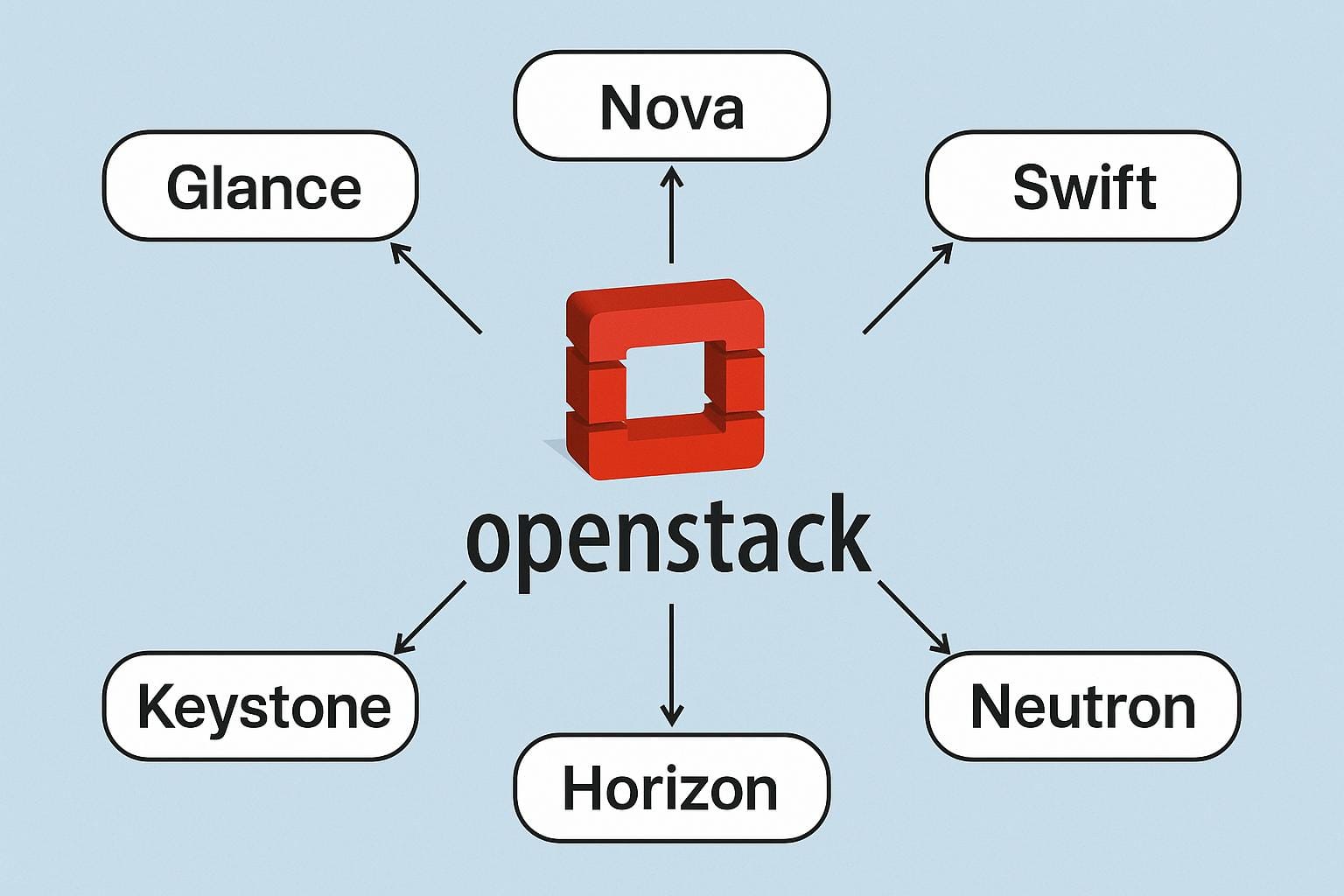
Why OpenStack Is the Engine Behind Modern Cloud Platforms
OpenStack has evolved into a powerful, enterprise-grade cloud platform, catering to a wide range of industries and use cases. With its flexibility, scalability, and cost advantages, OpenStack offers a compelling alternative to proprietary virtualization solutions like VMware. This article explores the benefits, common challenges, and key differentiators of OpenStack, along with real-world success stories and emerging trends shaping its future.
Benefits of Adopting OpenStack for VPS Hosting, Load Balancing, and VPNaaS
OpenStack delivers a complete set of cloud services out of the box. compute (Nova), block storage (Cinder), object storage (Swift), and software-defined networking (Neutron). These services enable providers to offer VPS hosting, load balancing (LBaaS), and VPN-as-a-Service (VPNaaS) without relying on external tools.
Multi-tenant Isolation & APIs: Hosting providers benefit from OpenStack’s robust multi-tenancy and standard APIs, allowing seamless service provisioning.
Avoiding Vendor Lock-in: As an open-source platform, OpenStack eliminates costly licensing fees associated with platforms like VMware, making it ideal for cost-sensitive deployments.
Horizontal Scalability: Designed for cloud-scale growth, OpenStack allows operators to expand infrastructure by adding nodes without architectural changes.
DevOps & Automation Friendly: Integration with tools like Heat (orchestration) and Terraform allows fully automated provisioning of complex environments.
Kubernetes Integration: Projects like Magnum enable Kubernetes deployment on top of OpenStack, blending VM and container orchestration.
Challenges and Pain Points in Adopting OpenStack
While powerful, OpenStack comes with operational complexity:
Deployment Overhead: A production-grade OpenStack setup requires multiple nodes for controller, compute, and storage functions.
Upgrade Complexity: Frequent release cycles historically made upgrades painful. The new SLURP (Skip Level Upgrade Release Process) now allows operators to upgrade yearly.
Steep Learning Curve: Proficiency in multiple domains (compute, storage, networking, identity) is required. Lack of skilled personnel is a noted industry bottleneck.
Networking Challenges: Neutron, while flexible, can be complex requiring fine-tuning (e.g., DPDK, SR-IOV) to achieve performance parity with hardware-based networks.
Despite these challenges, organizations that heavily automate their OpenStack infrastructure report significant long-term benefits.
OpenStack vs VMware: A Technical and Strategic Comparison
Cost: OpenStack offers zero licensing fees. VMware’s costs have escalated recently, especially after Broadcom’s acquisition.
Scalability: OpenStack powers clouds with millions of vCPUs (e.g., Walmart, China Mobile). VMware is ideal for traditional enterprise workloads but may hit cost and scaling ceilings.
Flexibility: OpenStack’s modular architecture supports any storage backend, hypervisor, or SDN plugin. VMware offers a tightly integrated stack with less room for customization.
Use Cases: OpenStack is popular with telcos, cloud providers, and large e-commerce platforms. VMware remains dominant in conservative enterprise IT environments.
In practice, many organizations use both: OpenStack for modern, scalable workloads and VMware for legacy systems.
Enterprise Success Stories
- Walmart: Runs over 1 million cores on OpenStack, powering global e-commerce and in-store operations. OpenStack upgrades were reduced from 30 days to 48 hours through automation.
- PayPal: Uses OpenStack for its core payment infrastructure, processing billions of transactions.
- Blizzard Entertainment: Utilizes OpenStack’s autoscaling features to support gaming workloads.
- AT&T & China Mobile: Run national-scale telecom infrastructure and 5G services on OpenStack.
- Gap Inc.: Reduced server provisioning times from weeks to 90 seconds.
- OVHcloud: Operates a massive public cloud on OpenStack with over 900,000 cores.
These cases highlight OpenStack’s reliability, performance, and agility in mission-critical environments.
Emerging Trends in the OpenStack Ecosystem
- Kubernetes & Containers: Over 85% of OpenStack users also run Kubernetes. Magnum and LOKI (Linux + OpenStack + Kubernetes Infrastructure) show growing synergy.
- Hybrid & Multi-Cloud: OpenStack integrates with public clouds, using tools like Terraform and supporting services like Octavia for hybrid load balancing.
- Edge & Telco Innovations: Projects like StarlingX enable lightweight OpenStack deployments for 5G, IoT, and branch office use cases.
- User Experience: New UI (Skyline), managed services, and containerized deployment tools (e.g., Kolla) aim to simplify operations.
- Hardware Integration: OpenStack now supports GPUs, FPGAs, SmartNICs, and bare-metal provisioning (via Ironic) for high-performance and AI/ML workloads.
- Community Growth: OpenStack’s market is projected to exceed $7.7B. New deployments are rising in emerging markets (Africa, LATAM). The “VMware exit” trend is accelerating adoption.
OpenStack today is not just alive, it’s thriving. Its open-source nature, vast feature set, and flexibility make it a powerful foundation for building modern clouds. Despite the operational challenges, its maturity and ecosystem advancements continue to attract enterprises seeking control, cost efficiency, and innovation. Whether used for private clouds, hybrid deployments, or edge computing, OpenStack remains a cornerstone of open infrastructure.
